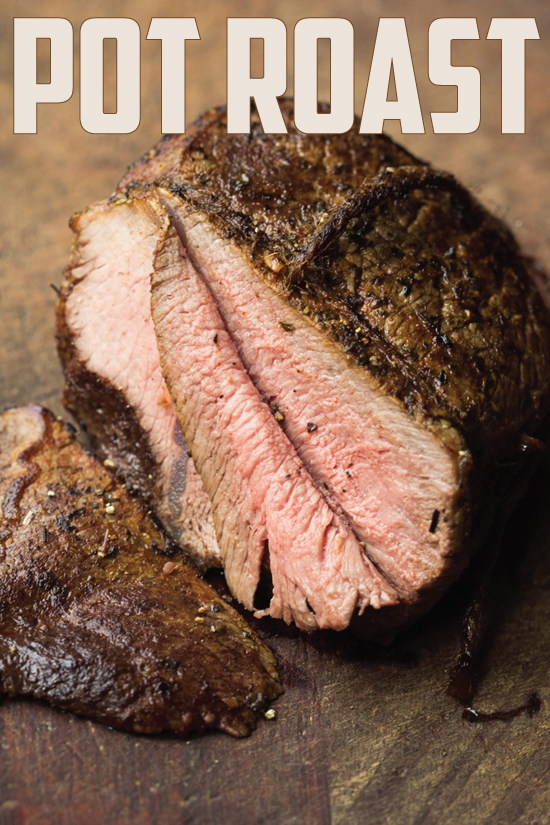
Whatever happened to pot roast? A perfect pot roast used to be one of America’s great Sunday suppers. Sadly pot roast has become a grandmotherly anachronism. My guess is people think that a perfect pot roast, the kind with meltingly tender meat served with flavorful veggies on the side, is just too hard to make. Which it just isn’t. It does take some time however. In our fast-paced world, that may equate with just too hard. Sometimes time is the hardest thing to make room for in our busy lives. But let’s change that at least long enough to make one perfect pot roast.
The idea of a perfect pot roast exists in many cuisines around the world. Though it’s basically the same in every culture. Italians call it stracotto, which means “overcooked,” The Germans have sauerbraten and New Englanders in this country make something they call a Yankee pot roast. Texans have cowboy pot roast. And it’s all perfect pot roast.
Lately, with nostalgia on the menu pot roast, and other comfort foods, are enjoying a well-deserved renaissance. As I said, a perfect pot roast is simple to accomplish, despite the hours it requires, because it needs little tending through most of the cooking process.
Tips for Perfect Pot Roast
- Choose the right meat: The first thing you need to do when you make pot roast is to choose the right meat. Don’t choose a lean cut of meat. I typically look for beef chuck weighing 3 to 5 pounds, which comes from the shoulder of the animal. This cut contains a lot of fatty connective tissue which sounds gross, but when cooked properly, becomes deliciously moist and tender.
- Sear the Meat: Contrary to what you’ve heard searing meat does not seal in juices. It does, however, vastly improve the taste and texture of almost any meat.
- Cook Low and Slow: Braising is not boiling, it’s not simmering either (we simmer without a lid). Braising is a long, low, moist, covered cooking method. The key to braising success is giving it enough time to break down that connective tissue I mentioned. The stuff released is what gives us a velvety sauce.
- Rest the Meat: Resting is the most important step in cooking a perfect pot roast. The heat of the oven, dries out the outer edges of the meat and forces all the juices into the center. If you were to cut the meat without resting it, those juices would just drizzle out. Resting the meat for at least 10 minutes, lightly tented with foil, allows the meat fibers to relax and redistribute the juices throughout so that they can better hold onto juices once cut.
- Think about the Veggies: A perfect pot roast is more than just meat. I’ll often cook the pot roast with plenty of vegetables in the braising liquid. However I don’t serve these veggies with the meat. I strain them out towards the end of cooking and then add veggies that I’ve roasted separately. It’s an extra step, but it assures beautiful vegetables on the side and a very flavorful sauce.
GREG
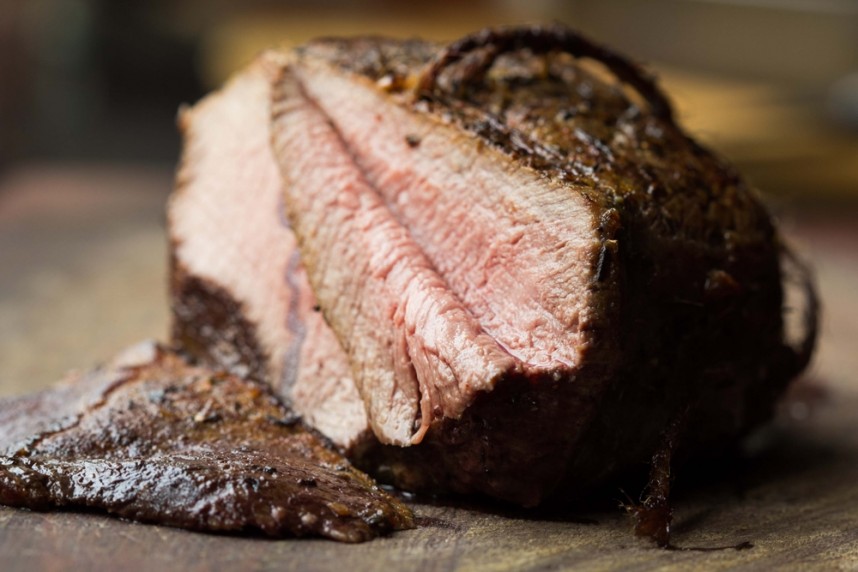
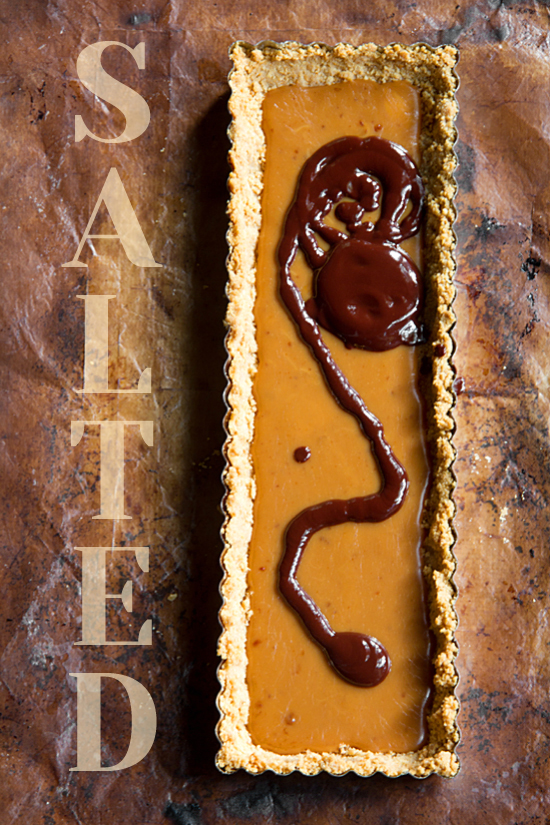
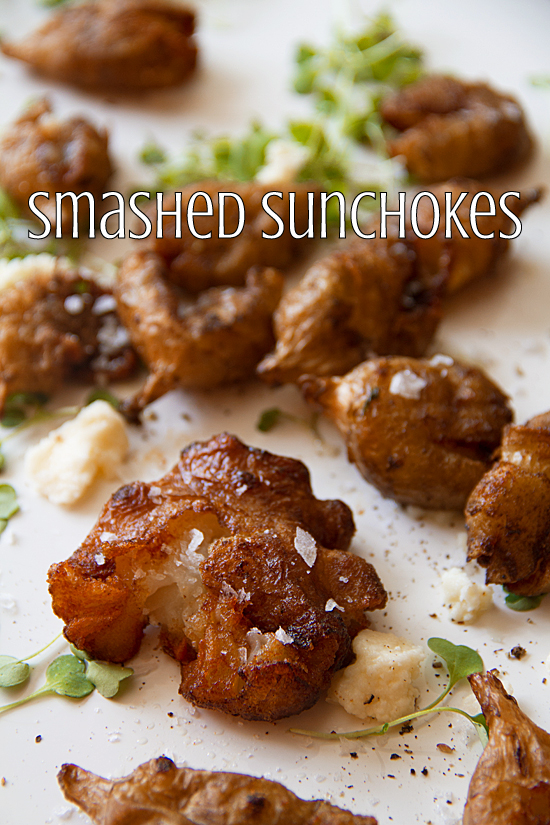
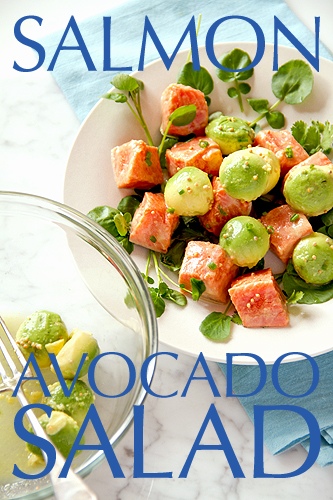
This is getting bookmarked!
Il vino rosso non e’ optional nella versione italiana.
In italian version, red wine is not optional.
I make a beautiful roast about once a month…keeps my marriage spicy! Today’s version, in honor of the New Year, is a large cross-cut rib roast. I coated with a simple version of Montreal Steak Seasoning (dried garlic, kosher salt, large-ground pepper, red pepper flakes, etc) and seared it in olive oil, hitting all sides with high heat! Smoky kitchen? You bet! Deglazed pan with 1/4 cup dark balsamic vinegar, poured over the top of the roast! Then, put into a pre-heated 300 degree oven for a 3‑hour roast. During the last hour, I’ll dump a huge quantity of root veggies into the pot (parsnips, carrots, purple potatoes, golden beets, onions, garlic cloves, and celery) and pump up the oven heat to 350. Bam!
I make it for the leftovers. Love pot roast sandwiches with crusty bread, horseradish. The idea of separating vegetables is a good one. I can never judge that and end up with soggy veggies.
Nothing better! Perfectly done! Happy New Year, Greg!
Good lord, G, that looks just about perfect. Great pointers on braising, it is one of my favorite non-grilling techniques because of how luscious it breaks down the connective tissues. You have me craving some braised short ribs now (even if this was a roast).
Love the tips, especially the last one about the vegetables. That’s a brilliant little slight of hand for a perfect dinner.
I still make pot roast! And when I do, it’s usually on Sunday. I’m glad to hear that I’m not the only one who roasts vegetables separately to serve with it 🙂 Great tips — chuck roast is the only way to go!
OMG. You have made pot roast look elegant. Amazing!
Now there’s a manly piece of meat. What a nice looking roast. Bart just loves it when I roast large piece of meat — whether it be pork or beef. And congrats on a well put together Pot Roast 101. Best wishes to you and Ken for a very happy, healthy and prosperous 2015!
Perfect pot roast is definitely a lost art. My mom used to make a terrible version, but I’m sure yours would blow hers out of the water.
As you have already surmised it has been years since I have made a pot roast in my own kitchen. That, along with many things, needs to change.
Woah…this is one legit looking pot roast, Greg! Forget about football. I’m pretty sure I could stare at this sweet meat for 12 hours straight…as long as I got a piece or two at the end, of course. Great post for winter comfort food! Pinned.
Can’t remember the last time that I had a pot roast. but I definitely am craving all of it’s comforting, warming and delicious flavour right now. So perfect for the cool weather here in Aus.
Comfort food at it’s finest!
Never underestimate the humble pot roast. This is perfect for a post-holiday supper. Happy Holidays Greg! ~Bijouxs
That is a perfect pot roast. The other night, we were served Sauerbraten. It was slices of meat. No good gravy. I was so disappointed. I need to make one soon to counteract the horror. Love your tips, too.
Can I just sit here and stare at this all day?